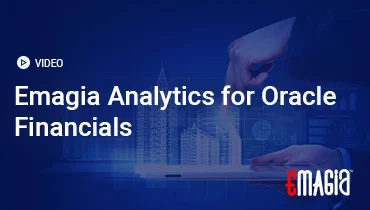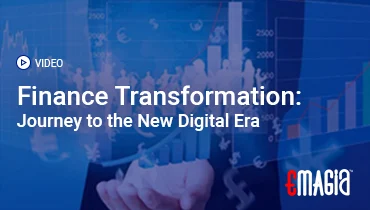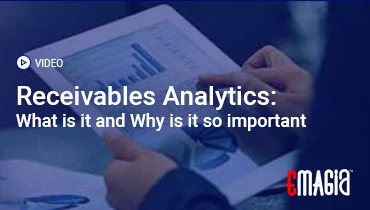In the digital era of business and finance, paper checks are gradually becoming a thing of the past. Enter the eCheck, a modern, efficient, and secure alternative for transferring money electronically. But what exactly is an eCheck, how does it work, and why are more businesses turning to it?
In this comprehensive guide, we’ll dive deep into what an eCheck is, how it functions, and how it can revolutionize the way your business manages payments.
What is an eCheck?
An eCheck, or electronic check, is the digital version of a traditional paper check. Instead of writing and mailing a check, the payer provides their banking details online. The transaction is processed through the Automated Clearing House (ACH) network, which transfers the funds securely from one bank account to another.
In essence, eChecks maintain the core function of traditional checks—authorizing direct bank-to-bank transfers—while eliminating the paper trail and physical handling.
How Does an eCheck Work?
Processing an eCheck involves several simple yet secure steps:
- Authorization – The payer authorizes the transaction via a digital form or online agreement.
- Bank Info Submission – The payer enters their routing and account number.
- Initiation – The payment processor initiates the transaction using the ACH network.
- Transfer of Funds – Funds are debited from the payer’s account and credited to the recipient’s account within 1–3 business days.
Key Components of an eCheck
Every eCheck transaction includes several crucial components:
- Bank Routing Number
- Account Number
- Payment Amount
- Digital Authorization
- ACH Processor Integration
These elements ensure the accuracy, legality, and traceability of the transaction.
Benefits of Using eChecks
Switching to eChecks can bring numerous advantages for both businesses and individuals:
- ✅ Lower processing fees than credit cards
- ✅ Faster clearing times compared to traditional checks
- ✅ Secure and regulated through federal compliance
- ✅ Ideal for recurring payments and large transactions
- ✅ Reduces paper use, postage costs, and environmental impact
eCheck vs. Other Payment Methods
Let’s see how eChecks stack up against other common payment types:
| Feature | eCheck | Credit Card | Wire Transfer |
|---|---|---|---|
| Processing Time | 1–3 Days | Instant | Same Day |
| Transaction Fee | Low | Medium–High | High |
| Chargeback Risk | Moderate | High | Low |
| Best Use Case | B2B, Utilities | E-commerce | High-Value Deals |
Security Features of eChecks
Security is one of the strongest aspects of eCheck payments. They utilize:
- 🔐 Bank-grade encryption
- 🔐 Tokenization and secure gateways
- 🔐 Multi-factor authentication (MFA)
- 🔐 Real-time fraud detection
- 🔐 Full NACHA compliance
These measures ensure every transaction is legitimate, traceable, and protected.
How Long Do eChecks Take to Process?
eCheck processing generally takes 1 to 3 business days, though some same-day ACH transfers are now supported by select banks.
Factors affecting processing time include:
- Time of day the eCheck is submitted
- Weekends and bank holidays
- Verification procedures
- Any errors in bank details
How to Send or Accept an eCheck
✅ For Individuals:
- Use online payment portals (e.g., bill pay services)
- Enter your routing and account number
- Submit and authorize the transaction
✅ For Businesses:
- Set up an eCheck-compatible merchant account
- Collect customer info via a secure form
- Integrate ACH into your invoicing software
Common Use Cases for eChecks
- Utility and subscription payments
- Rent or mortgage transfers
- B2B supplier payments
- Payroll deposits
- School tuition or daycare fees
- Charitable donations
Challenges and Risks Associated with eChecks
Despite their advantages, eChecks come with a few potential risks:
- ❗ NSF (Non-Sufficient Funds) rejections
- ❗ Processing delays on weekends
- ❗ Incorrect account details causing reversals
- ❗ Limited consumer familiarity
Most of these challenges can be mitigated through proper automation and payment validation systems.
How Businesses Can Integrate eChecks
To get started with eChecks, businesses should:
- Choose a payment processor that supports ACH
- Enable eCheck options at checkout or billing
- Secure bank data collection via encryption
- Obtain proper digital authorization
- Educate customers on how to pay via eCheck
Legal Compliance and Regulations
eChecks are governed by:
- NACHA Operating Rules
- Electronic Fund Transfer Act (EFTA)
- Uniform Commercial Code (UCC)
- Consumer Financial Protection Bureau (CFPB) guidelines
Digital authorization, record retention, and secure transmission are non-negotiable for compliance.
How eChecks Help Improve Cash Flow
Using eChecks can improve business cash flow by:
- 💰 Reducing transaction fees
- 💰 Speeding up collections
- 💰 Enabling recurring payments
- 💰 Allowing better forecasting with real-time tracking
- 💰 Automating reconciliation processes
Real-Life Examples of eCheck Usage
- A digital marketing agency bills clients monthly via eChecks.
- A school accepts tuition payments through secure ACH forms.
- A utility company offers discounts for eCheck autopay enrollment.
- A law firm pays vendors using eChecks for audit-friendly traceability.
Best Practices for Using eChecks
To ensure safe and efficient eCheck use:
- Collect bank details via encrypted forms
- Use trusted ACH processors
- Automate payment reminders and confirmations
- Verify accounts before processing
- Store records securely for compliance
Smarter Digital Payments with Emagia’s eCheck Solution
As part of its intelligent Order-to-Cash (O2C) platform, Emagia offers advanced capabilities to streamline eCheck processing for enterprise-level finance operations.
🔄 Intelligent Payment Workflows
Automate eCheck collection with digital invoicing, smart reminders, and customer self-service portals.
🔍 AI-Powered Reconciliation
Match eCheck transactions with outstanding invoices using Emagia’s cognitive data matching engine.
📈 Real-Time Cash Flow Visibility
Get up-to-the-minute insights into expected payments, failed transactions, and recurring billing patterns.
🔐 End-to-End Security
Protect every eCheck with bank-grade security, digital authorization, and compliance with industry standards.
🔗 Seamless Integration
Emagia integrates easily with ERP systems like SAP, Oracle, NetSuite, and Microsoft Dynamics for frictionless accounting.
With Emagia, your finance team can embrace the full potential of eChecks to lower costs, boost efficiency, and accelerate cash inflow.
FAQs About eChecks
👉 What is an eCheck and how does it work?
An eCheck is a digital form of a paper check. It withdraws funds from the payer’s bank account and deposits them into the recipient’s account via the ACH network.
👉 Are eChecks safe?
Yes, eChecks are highly secure thanks to encryption, digital authorization, and regulatory compliance.
👉 How long does an eCheck take to process?
Usually 1 to 3 business days, depending on the bank and submission timing.
👉 Can I cancel an eCheck?
If the payment hasn’t yet cleared, it may be canceled. After processing, a refund must be requested.
👉 Do all businesses accept eChecks?
Not all, but many utility companies, schools, and B2B vendors do. It’s becoming more widely adopted.
👉 What do I need to send an eCheck?
You need the recipient’s name, routing number, account number, and their permission to initiate the transfer.
Conclusion
eChecks are a secure, cost-effective, and future-ready payment method that blend the familiarity of checks with the power of digital processing. As businesses continue to embrace automation and smarter financial tools, eChecks play a pivotal role in modernizing payments and improving cash flow.
By leveraging platforms like Emagia, you can transform how you collect payments, automate your receivables, and take full control of your order-to-cash operations.



